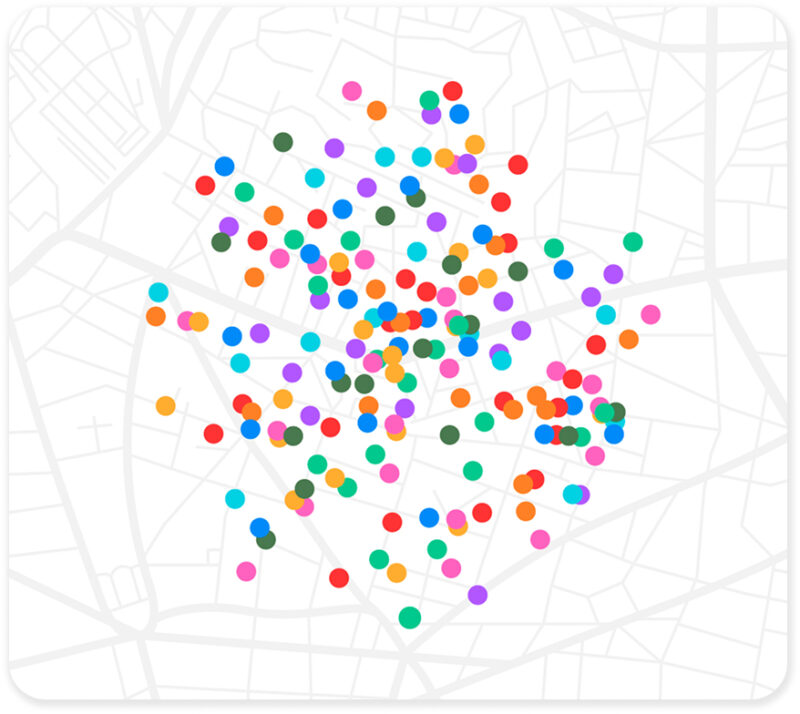Access to high quality, affordable housing is fundamental to people’s quality of life and creating a city that is happy, healthy, vibrant, and inclusive. It is well recognised that Cambridge, and its wider city region, faces a significant challenge in this respect, with some of the highest housing costs in the country outside of London. As our city region seeks to address this challenge, developing a deep understanding of key indicators within the region’s housing market and how these are changing over time is key. To enable us to monitor key indicators in respect of housing supply – the sales and rental markets, as well as homelessness and rough sleeping – Cambridge Ahead has begun producing a quarterly housing dashboard, drawing on these various data sources.
View the Quarterly Housing Dashboard here.
So, what is that data telling us?
- The number of homes sold rose during the pandemic
As the nation went into its first lockdown in 2020, the housing market was stalled and buying or selling a home became a challenge. However, this stall meant that there was a big release of pent-up demand to buy and sell in late 2020 and into early March 2021, after lockdown restrictions were lifted.As a result, after a steady drop in the number of sales between 2016 and 2020, September 2020 to March 2021 saw a big increase – back to 2016 levels of over 4000 sales – as those wanting to buy or sell a home were finally able to do so again. This sharp increase in sales was also a result of buyers wanting to complete their purchases quickly before the Stamp Duty holiday ended in June 2021.However, early data suggests that since March 2021, sales have begun to fall again, likely a result of the lack of new properties being listed, so that demand outstrips supply.
- Throughout the region house prices rose during the pandemic
Demand for housing has exceeded supply, and average house prices were inflated by buyers rushing to complete before the Stamp Duty holiday ended in June 2021. Throughout the region, house prices increased sharply from the beginning of the COVID pandemic, continuing a longer-term trend of house price increases nationally. Between March and September 2021, the average house price in Cambridge City was £525,025, with the lowest quartile of houses costing an average £345,000. The greatest change in house prices is seen in Huntingdonshire, where prices are reported to have increased by 20% in the last five years. However, from March to September, we began to see a national dip in sales prices, with Cambridge City the only area in the Cambridgeshire & Peterborough Combined Authority (CPCA) region to buck that trend. But, we need to read that data with caution given that there is a lag-time in sales reporting to the Land Registry which publishes this information. - Supply of New Homes increased in 2020/21
In the four years leading up to 2019-20, housing supply in Cambridge City and South Cambridgeshire had been increasing year on year. In 2019-20 there was a marked reduction in supply but 2020-21 saw supply once again on an upward trajectory. The 2018 Local Plan requires that 1675 homes are built annually, and since 2018, across years, this requirement has been met.The housing supply is also made up of different housing types. In 2020/21, 73% of newly constructed homes went for sale at market value, while 27% was affordable housing. Of these 8% were affordable ownership, such as shared ownership, 18% were offered as affordable rent and less than 1% were offered as social rent.Since 2012, there has been a significant drop in the provision of social rented houses in the Greater Cambridge area. This reflects the picture nationally of social rent housing making up a declining proportion of overall affordable housing supply as less funding is available to support their construction through the national Affordable Homes Programmes (AHP).
- Homelessness is rising in the Greater Cambridge area
The number of households assessed as homeless, and the number of households assessed as threatened with homelessness both increased between July and September 2021 compared to the same quarter last year. This is likely a result of the lift on the ban on evictions in May 2021, which was in place to protect renters during the COVID pandemic. Across the UK, the Ministry of Justice reported a 207% increase in landlord possessions in July-September compared to April-June last year. - Greater Cambridge is falling short on meeting EPC requirements
Within the context of climate change – our homes matter. The Cambridgeshire and Peterborough Independent Climate Commission found that energy use in our homes accounts for almost a quarter of overall emissions in our region. While Government has set targets for all homes to be above ‘C’ rating on the Energy Performance Certificate scale, only half of the homes in Cambridge meet that target at present. This figure is slightly less-than-half for South Cambridgeshire.




